304 ชีวิต สังเวยตึกถล่มในบังคลาเทศ
SOURCE : http://www.boston.comThe search for survivors continues in one of the worst manufacturing disasters in history. Fifty survivors were found today; the death toll stands at 304. Terrified workers notified the police, government officials and a powerful garment industry group about cracks in the walls, discovered just days before the collapse. The owner of the eight-story Rana Plaza assured 3,000 workers that the structure was safe and they returned to their jobs. The death toll nears 300 with more workers trapped under the massive concrete and wire. A small collection of the hundreds of images made over the last three days, follows. -- Paula Nelson ( 30 photos total)

A Bangladeshi woman weeps holding a picture of her missing husband as she waits at the site of a building that collapsed April 24, in Savar, near Dhaka, Bangladesh, April 26, 2013. (Kevin Frayer/Associated Press)

Volunteers and rescue workers assist in rescue operations 48 hours after an eight-story building collapsed in Savar, on the outskirts of Dhaka, on April 26, 2013. At the disaster scene, exhausted teams of soldiers, firemen and volunteers continue to work through the mountain of mangled concrete and steel. Amid frustration about the slow pace of the efforts, thousands of anxious relatives burst onto the disaster site, prompting police to fire tear gas to disperse the crowd. (Munir Uz Zaman/AFP/Getty Images)#

A garment worker who was pulled alive from the rubble is removed from the area on a stretcher at the site of a building collapse, April 26, 2013. The death toll grew as rescuers continued to search for injured and missing, after the collapse of an eight-story building housing several garment factories. (AP Photo/Kevin Frayer/Associated Press)#
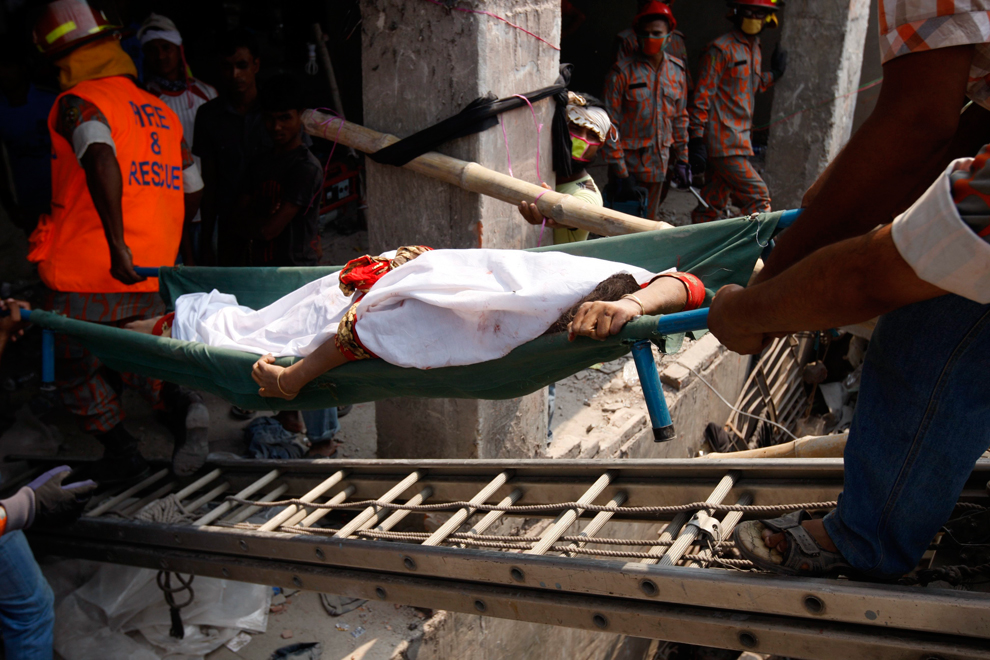
Rescue workers recover the body of a female garment worker, April 25, 2013. Rescuers recovered at least 187 bodies from the rubble of the collapsed building that housed mostly garment factories, officials said. More than 1000 people were injured. Local people rescued more than 100 garment workers. (Abir Abdullah/EPA)#
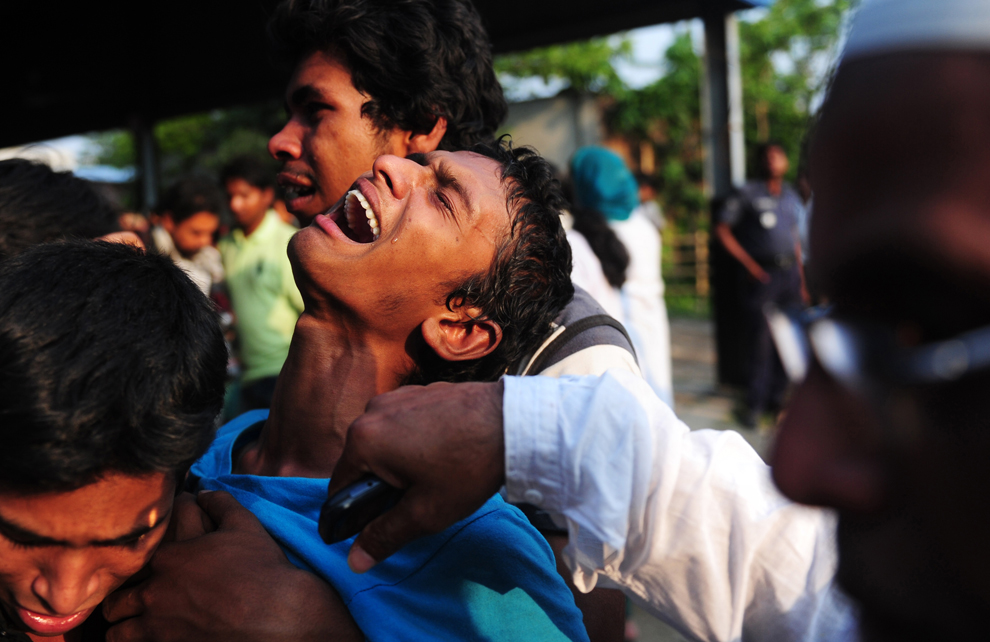
A youth reacts after seeing his relatives bodies, April 24, 2013. An eight-story building containing several garment factories collapsed in Bangladesh, and further highlighted documented safety problems in the clothing industry. Armed with concrete cutters and cranes, hundreds of fire service and army rescue workers struggled to find survivors in the mountain of concrete and mangled steel.(Munir uz Zaman/AFP/Getty Images)#
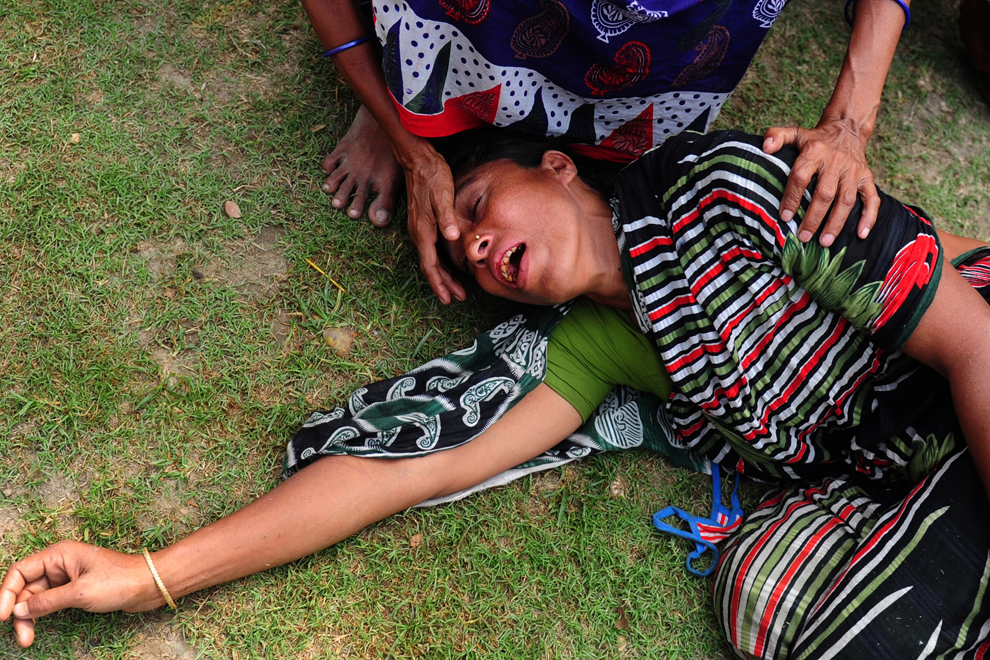
A woman reacts after identifying the body of her husband killed in the collapse of the eight-story building, April 25, 2013. The death toll continues to rise in Bangladesh's worst industrial disaster. Survivors are still being pulled from the rubble of the collapsed garment factory building. (Munir uz Zaman/AFP/Getty Images)#

A Bangladeshi garment worker lies crushed under the rubble 48 hours after the eight-story building collapse, April 26, 2013. At the disaster scene, where 304 have been found dead, exhausted teams of soldiers, firemen and volunteers continued to work through the mountain of mangled concrete and steel for a third day after staying on the job for a second straight night. Amid frustration about the slow pace of the efforts, thousands of anxious relatives burst onto the disaster site, prompting police to fire tear gas to disperse the crowd. (Munir uz Zaman/AFP/Getty Images)#






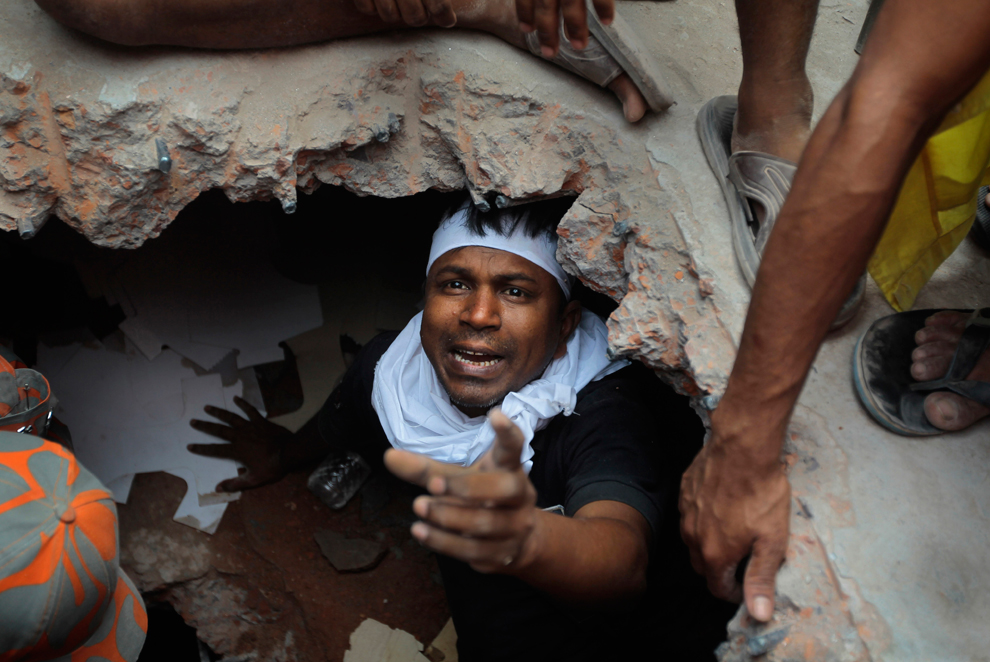
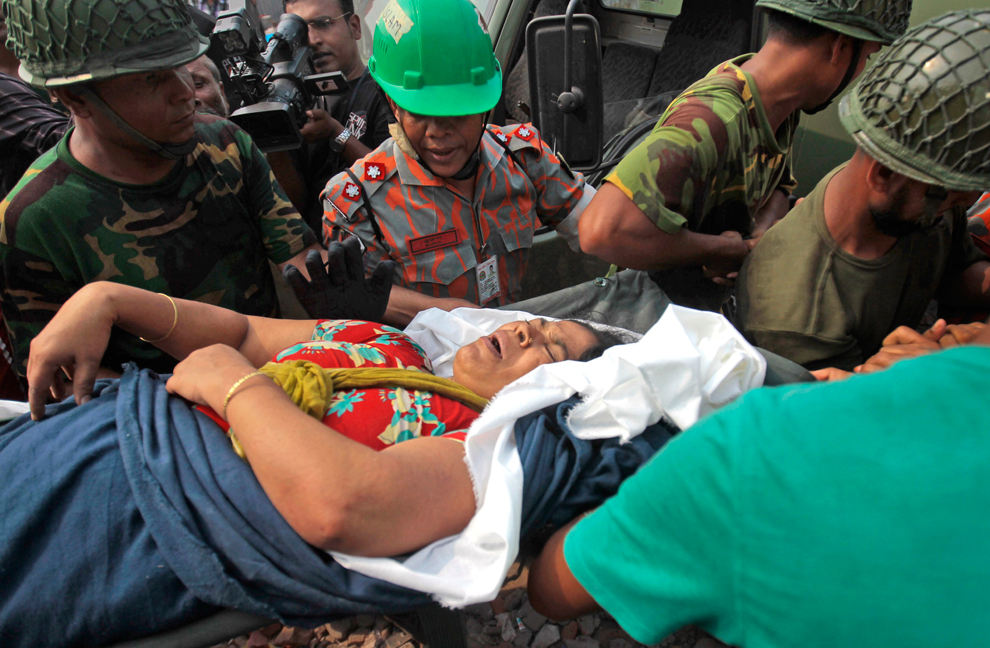
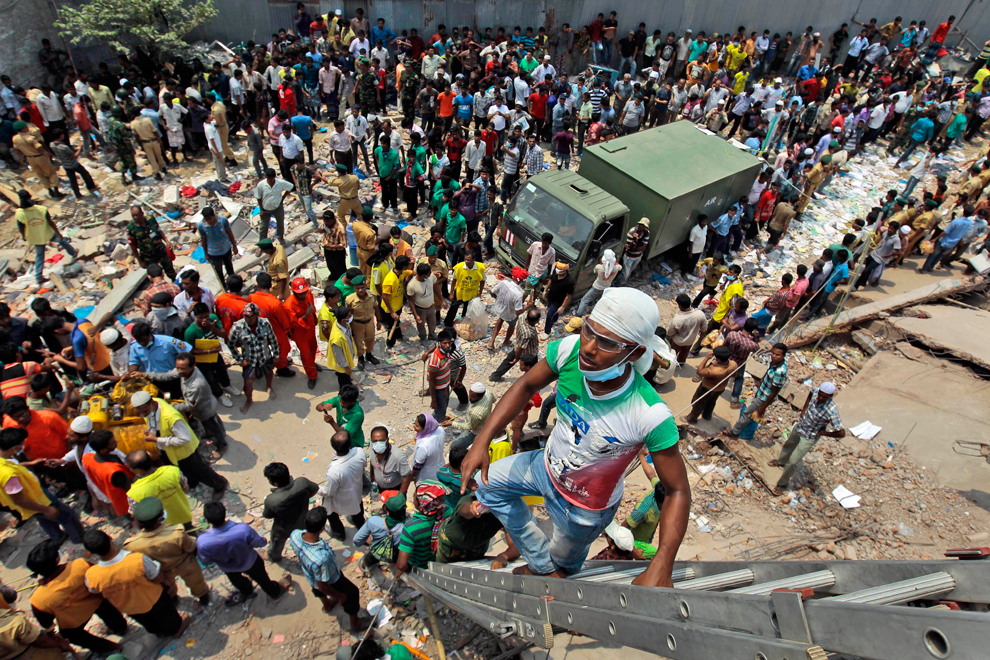

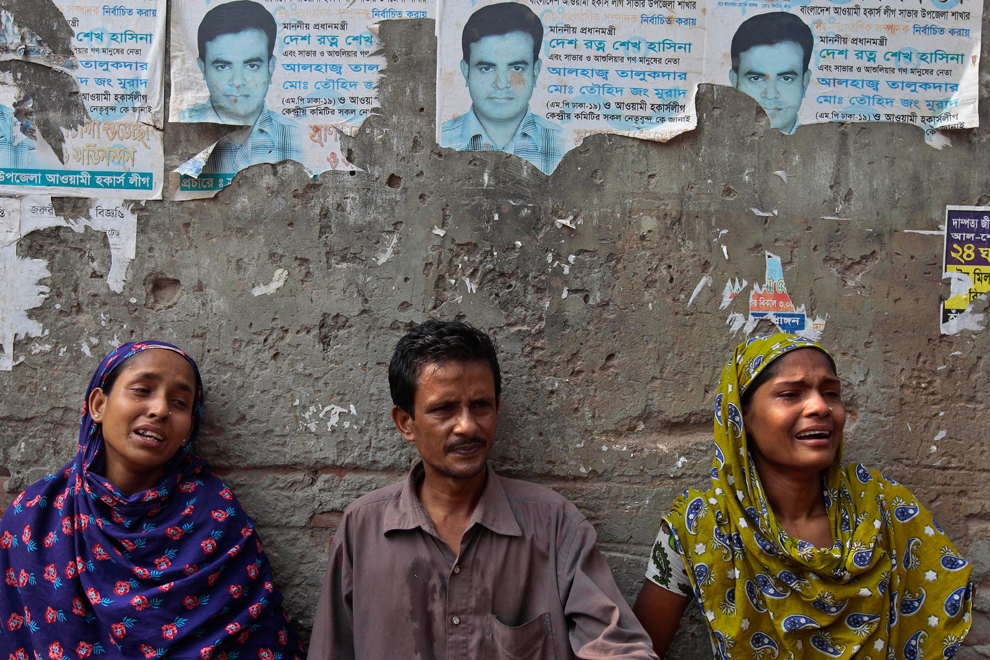
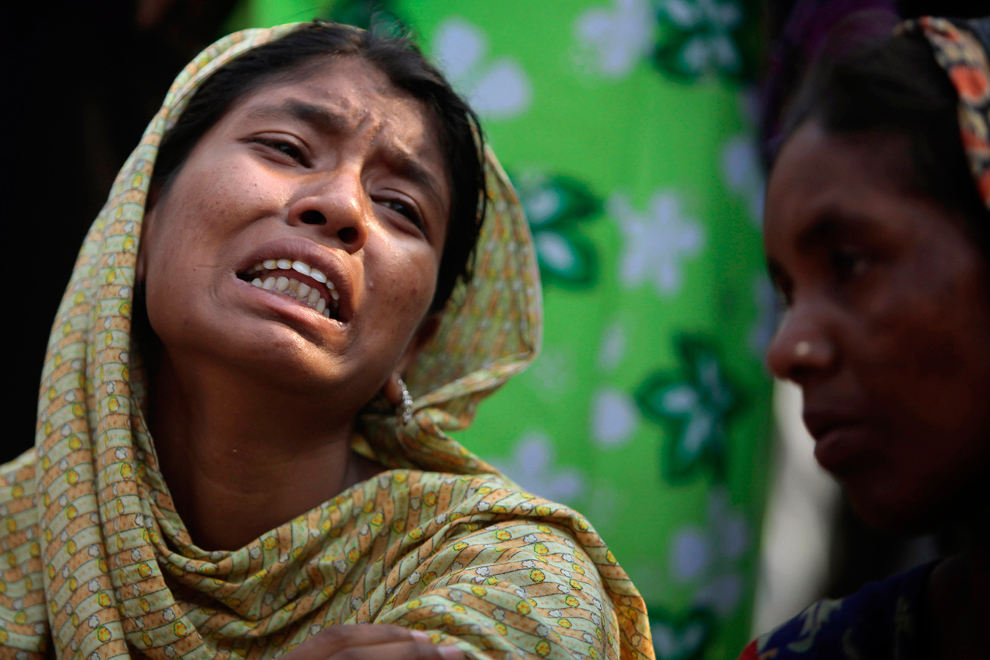
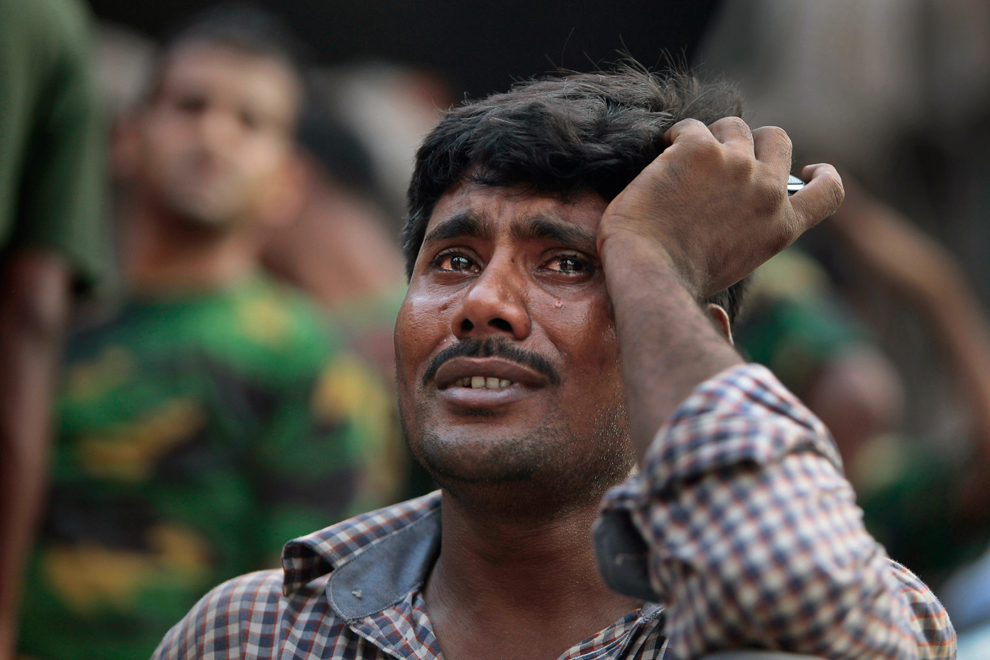
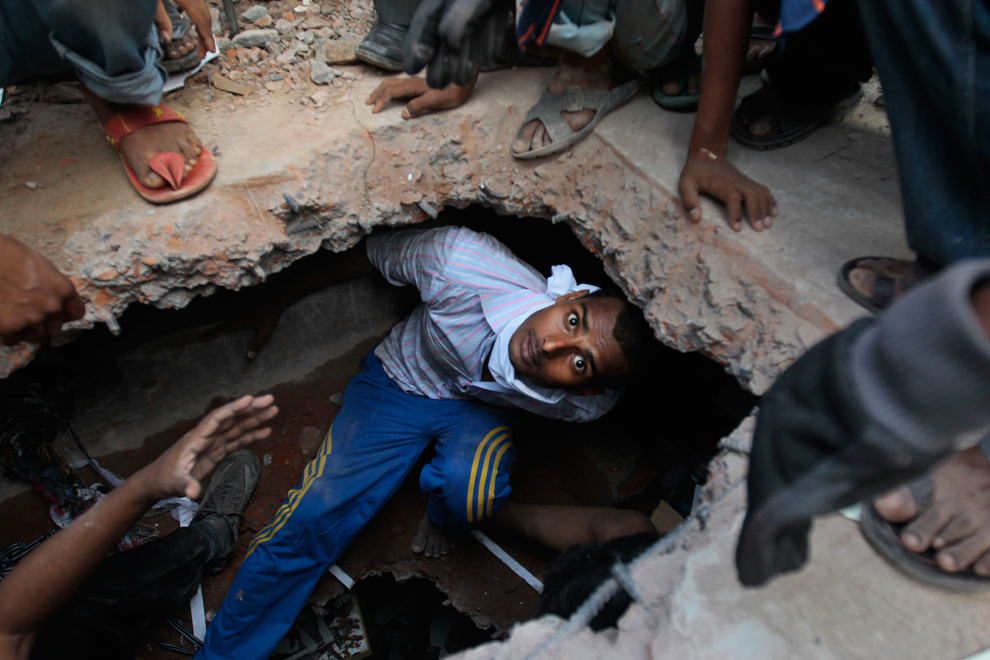
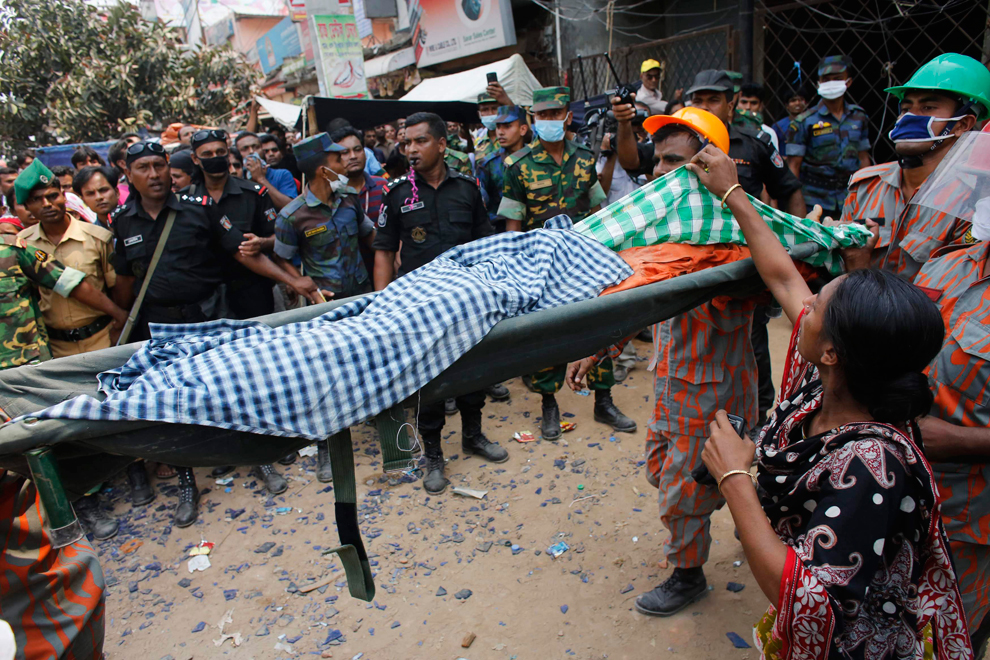
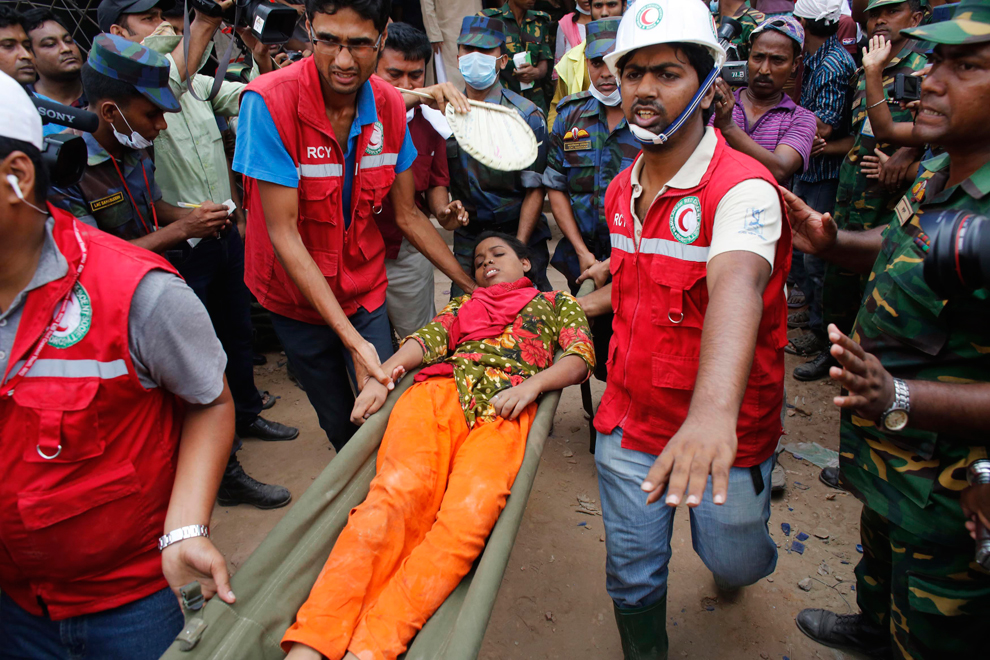
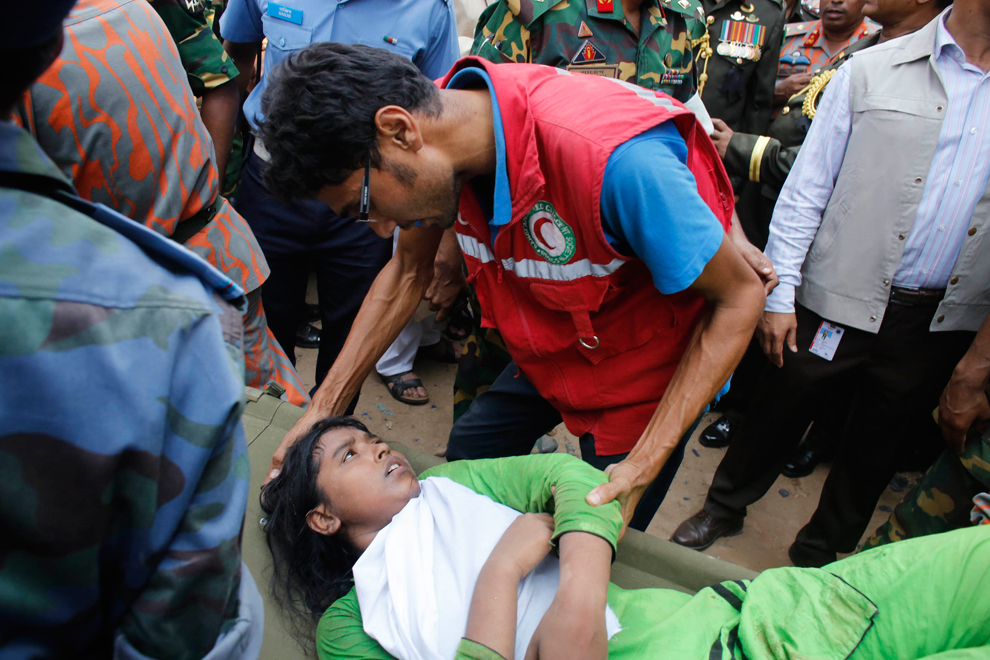
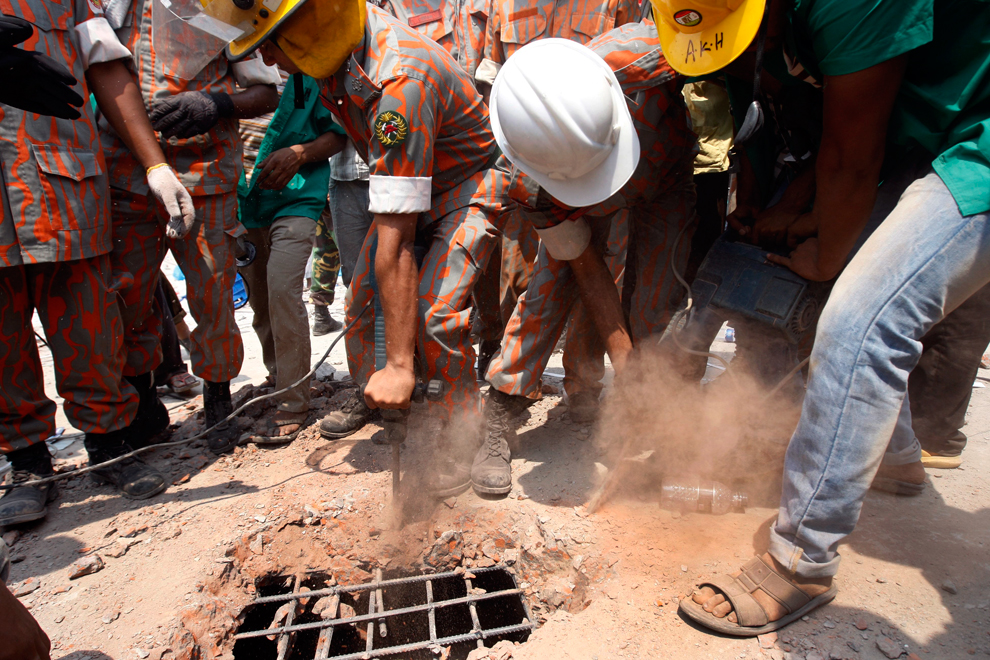

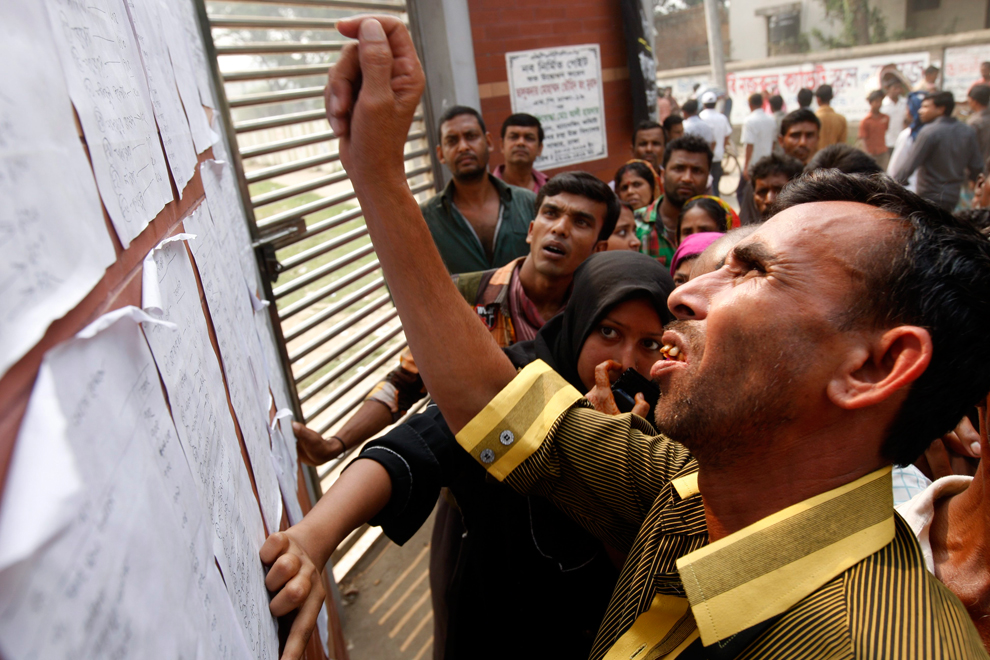
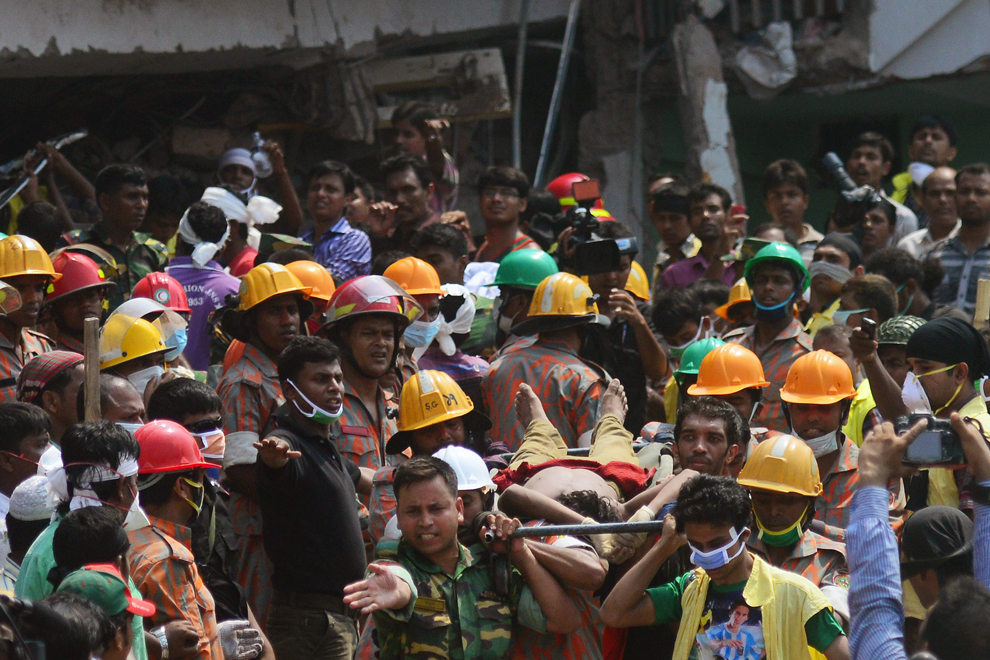
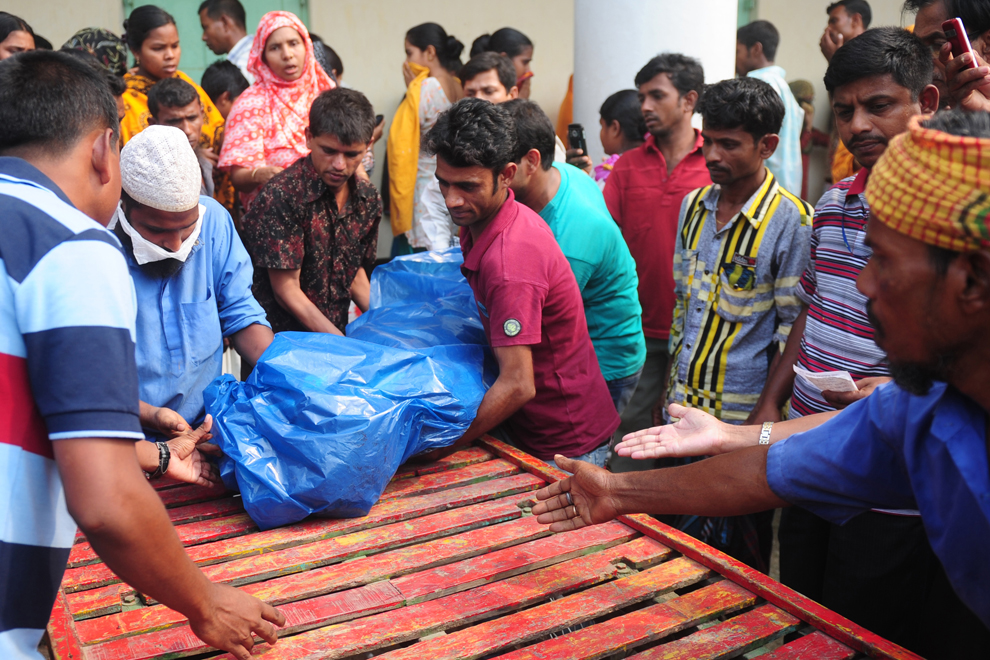
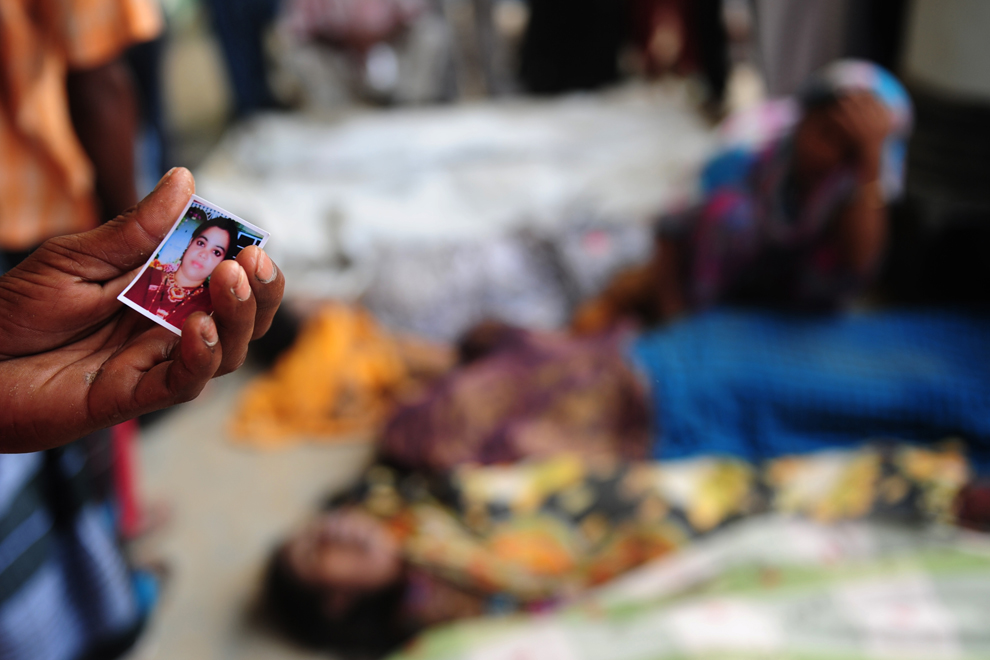
No comments:
Post a Comment